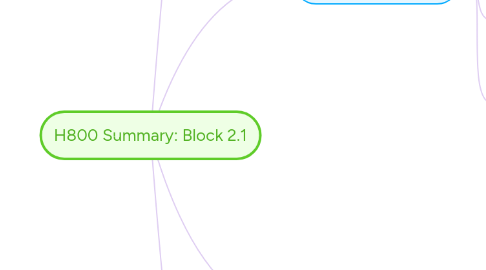
1. Weeks 8/9: Designing for learning
1.1. What is learning design?
1.1.1. the act of devising new practices, plans of activity, resources and tools aimed at achieving particular educational aims in a given situation’, Mor & Craft
1.1.2. a representation of teaching and learning practice documented in some notational format so that it can serve as a model or template adaptable by a teacher to suit his/her context, Agostinho 2006
1.1.3. ‘a fancy word for what you were doing every day of your professional life: working out what you were going to teach and how you were going to teach it. The difference is that with first distance learning and now e-learning we’ve had to make that process more explicit, because without face-to-face contact you can’t fix things on the fly if they start going wrong, Beetham 2007
1.2. Design narratives
1.2.1. Learning design grid, Yishay
1.2.2. Cloudworks
1.3. Representations
1.3.1. For the purposes of this paper, it is relevant to know that learning design aims to devise approaches and tools to assist teachers/designers in planning educational events of various kinds, based on pedagogically sound criteria for the identification of learning objectives, appropriate learning strategies, assessment criteria, digital tools and media, Persico et al, 2013
1.4. Visualising design
1.4.1. CompendiumLD
1.4.2. Pedagogical Patterns Collector
1.5. Schemas for thinking about design
1.5.1. Four facets of learning
1.5.2. 3 dimensions of learning, Conole et al, 2004
1.6. Further reading
2. Week 10a: Who’s teaching, who’s learning?
2.1. Wikipedia
2.1.1. How I fell in love with Wikipedia
2.1.2. Should we use Wiki?
2.2. Citizendium and with Delicious?
2.3. What is Duckduckgo
2.3.1. 12 Things DuckDuckGo Can Do That Google Can't
2.4. Worries about the CLoud
2.5. Using Diigo & Delicious
2.6. Being digital: skills for online learning
2.7. Varying uses of blogs
2.7.1. Many of the students enjoyed blogging and found it to be beneficial from both educational and social perspectives. They used their blogs in several ways, including community building, resource-consolidation, sharing ideas, catharsis and emotional support, or as a personal journal. However, some students found blogging problematic; they were concerned about revealing their personally perceived academic inadequacies to others…, Kerawalla etc al, 2008
2.7.2. there is a real danger that such commentary will create a vague but pervasive feeling among tertiary educators that every student who enters the higher education system is a blogger., Kennedy et al, 2007
3. Week 10b: Open educational resources
3.1. Introduction to OER
3.1.1. Commonwealth of Learning: Paris declaration promotes international support of OER
3.1.2. Openness has won – now what?
3.2. Exploring OERs
3.2.1. MIT Open Courseware (Massachusetts Institute of Technology, USA)
3.2.2. Open Learning Initiative (OLI, Carnegie Mellon University, USA)
3.2.3. OpenLearn (The Open University, UK)
3.2.4. iTunes U (International) and The Open University on iTunesU
3.3. Redesigning OER
3.3.1. Further reading
4. Week 11: Debates on elearning
4.1. Iron triangles
4.2. Accessibility and elearning
4.2.1. UNESCO DAKAR report
4.3. The global digital divide
4.3.1. Internet stats
4.4. Cheap computers
4.4.1. One Laptop per Child project
4.5. Cheap content
4.5.1. Internet Archive
4.6. Alternatives to computers
4.6.1. The third generation cellphones also have the ability to provide low cost access to [the] internet, which may be from community telecentres, but enables learners to receive and send information cost effectively, including text messages and emails. , Daniels, 2006
4.7. Aspects of quality and elearning
4.7.1. ICT and test performance - results are mixed, Kozma, 2007
4.7.2. Disbeneifits
4.7.3. The google generation revisisted
4.7.4. Quality goes down because few teachers know how to use the new tools effectively and the students, who often do know how to use them, would rather apply them to other tasks. , Daniel 2007
4.8. Cost and elearning
4.8.1. E-learning initiatives that did not reach targeted goals
4.8.2. How does the University of Phoenix measure up?
4.8.3. How much does elearning cost?
4.8.3.1. Laurie Bassi (2000) argues that ‘if someone claims to have “the” answer: (1) they don’t know what they are talking about, or (2) they are trying to sell you something’.
4.8.3.2. Towards a theory or model of productivity for online learning: outcomes, scale and design.
